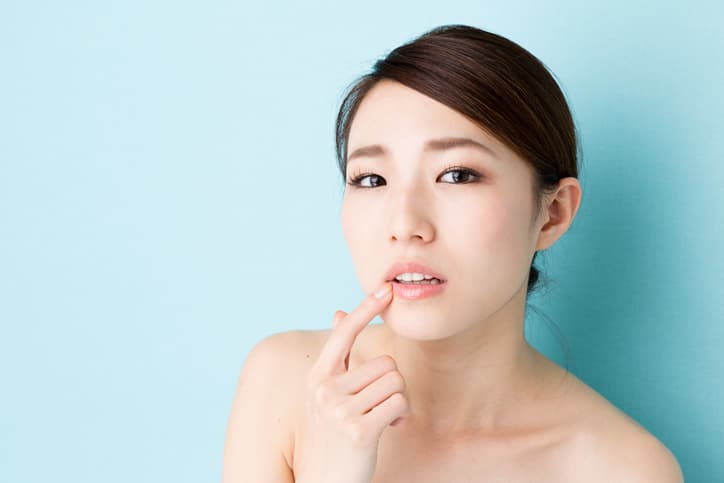
1. Tingling
The first stage of a cold sore is the tingling stage. This stage occurs on day one of the cold sores. During this stage, you may notice a tingling, itching or burning sensation under your skin. This sensation is a warning sign that a cold sore will soon develop. According to the United Kingdom’s National Health Service (NHS), when antiviral creams are applied at this time, the symptoms can be eased and healing time can be sped up. This is also the best time to receive cold sore laser treatment.
2. Blistering
On day two to three of the cold sore, the blister stage occurs. During this stage, small, fluid-filled blisters appear. These blisters can develop along the border between the lips and the skin of the face. They can also develop on the cheeks or around the nose, explains Mayo Clinic.
3. Weeping
On day four of the cold sore, the next stage occurs. The fluid-filled blisters that developed earlier burst. This leaves behind painful open sores, known as ulcers. It’s important to note that this is typically the most contagious of the cold sore stages. Be careful to wash your hands after touching your cold sore.
4. Crusting
Finally, the weeping blisters start to dry up. This happens on days five to eight of the cold sore. The blisters will develop yellowish or brownish crusts. The crusts will fall off on their own.
5. Healing
The healing stage is the last of the cold sore stages, and it’s one cold sore sufferers look forward to. This stage happens on days nine to 12 of the cold sore. The scabs flake off and are replaced with new, smaller scabs. This continues until the cold sore is completely healed. According to the Mayo Clinic, healing can take anywhere from two to four weeks, so be patient. Usually, no scars are left behind but the cold sore can return later.
Why Cold Sores Come Back
Cold sores are caused by the herpes simplex virus type one (HSV-1). This virus is very common, and there’s no cure for it. The HSV-1 virus remains dormant in your nerve cells, and it can be “woken up” by many triggers. These triggers can include stress, hormonal changes, fatigue or exposure to the sun.
Medications are available for people who get cold sores often. Antiviral medicines can be used to help prevent cold sores in frequent sufferers, and these medicines can also help cold sores heal more quickly. Talk to your doctor or dentist to find out if these medicines are right for you.
Determining your cold sore triggers can also help keep these painful sores at bay. For example, if you notice that you tend to get cold sores during stressful times, learning ways to control your stress could be helpful. Learning your triggers can take some trial and error.
Oral Care With Cold Sores
When you have a cold sore, you may not feel like brushing your teeth. It’s important to continue your regular oral hygiene routine, even when you’re not feeling your best. Brushing twice a day and flossing once a day helps keep your teeth and gums healthy. After your cold sore goes away, it’s a good idea to replace your toothbrush.
If you get frequent cold sores, your doctor or dentist can help you manage them.
